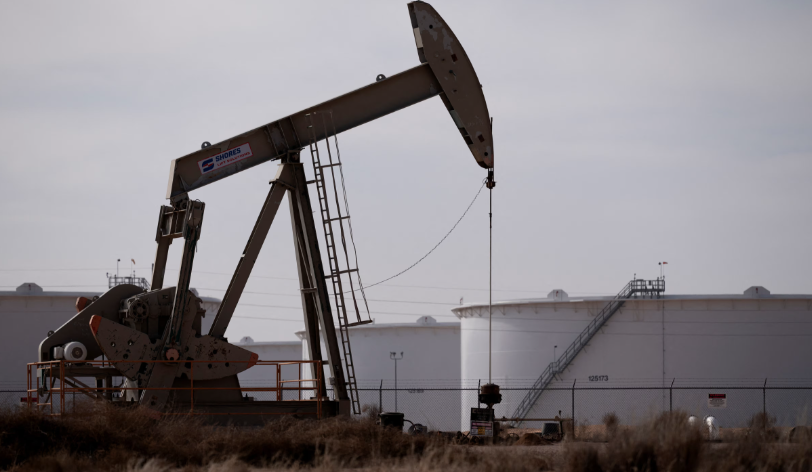WORLD NEWS

Oil prices plunged by as much as 7% on Wednesday, hitting four-year lows before regaining some ground, as the ongoing U.S.-China trade war took a turn for the worse. The drop in oil prices followed China’s announcement that it would impose an additional 84% tariff on U.S. goods in retaliation for President Donald Trump’s tariff policy.
Escalating Tariffs and Oil Price Reactions
The Chinese Finance Ministry stated that the new tariffs would take effect starting Thursday, sharply increasing from the previous 34% tariffs. As a result, Brent crude futures dropped by $2.47 or 3.9%, reaching $60.35 per barrel, while U.S. West Texas Intermediate (WTI) crude was down by $2.35 or 3.9%, settling at $57.23 per barrel.
Both oil contracts experienced an initial loss of about 7% before partially recovering, signaling the deepening market concerns tied to the trade dispute between the world’s two largest economies.
Impact on Oil Demand and Supply Concerns
The escalating tariffs and trade tensions have led to growing fears of a global economic slowdown, which could reduce oil demand. UBS analyst Giovanni Staunovo noted that while oil demand has not yet been significantly impacted, the escalating fears over a recession could lead to lower oil prices to trigger necessary supply adjustments.
"While oil demand has likely not suffered yet, rising concerns of weaker oil demand over the coming months require lower prices to trigger supply adjustments to prevent an oversupplied market," Staunovo said.
China’s aggressive retaliation against U.S. tariffs has raised doubts about the possibility of a quick resolution to the trade war. Ye Lin, vice president of Rystad Energy, emphasized that this could lead to a reduction of 50,000 to 100,000 barrels per day of Chinese oil demand growth.
Global Economic Fears and Impact on OPEC
The trade war is not just hurting oil prices, but also threatening broader economic growth. With fears of recession mounting across the globe, European Union countries are expected to approve their countermeasures to Trump’s tariffs, adding to the retaliatory measures already in place by China and Canada.
Amid these concerns, Panmure Liberum analyst Ashley Kelty pointed out that some U.S. analysts speculate that the Trump administration may aim to drive oil prices closer to $50 per barrel, believing that the U.S. oil and gas industry can endure a period of disruption. However, Kelty dismissed this idea, arguing that such a move would likely lead to a reduction in U.S. oil production and pave the way for OPEC to regain its dominant role in influencing oil prices.
OPEC’s Role and Future Price Forecasts
As the market continues to deal with the effects of the trade war, OPEC+ producers have raised output by 411,000 barrels per day in May 2025. This increase in production is expected to add to the oversupply in the market, putting further downward pressure on prices.
Goldman Sachs has revised its oil price forecast, predicting that Brent crude and WTI prices could settle at $62 and $58 per barrel, respectively, by December 2025. Prices are expected to decline even further to $55 and $51 per barrel by December 2026.
Positive Signs for Oil Demand?
Despite the bearish outlook, there is some positive news for U.S. crude demand. The American Petroleum Institute (API) reported that U.S. crude inventories fell by 1.1 million barrels in the week ending April 4, 2025, contradicting expectations of a 1.4 million-barrel build. This suggests that there is still some strength in demand, despite global market pressures.
Official data from the Energy Information Administration (EIA) is expected later on Wednesday, providing further insights into the state of U.S. oil inventories.
What’s Next for Oil Prices?
As the U.S.-China trade war intensifies, it remains unclear how much further oil prices will drop. The situation continues to evolve, with both supply and demand factors playing a significant role in shaping the market’s future.
With geopolitical uncertainties hanging over the market and concerns of an economic slowdown looming large, oil traders and analysts will be keeping a close eye on future developments in the global trade war, OPEC’s decisions, and demand shifts in the coming months.




